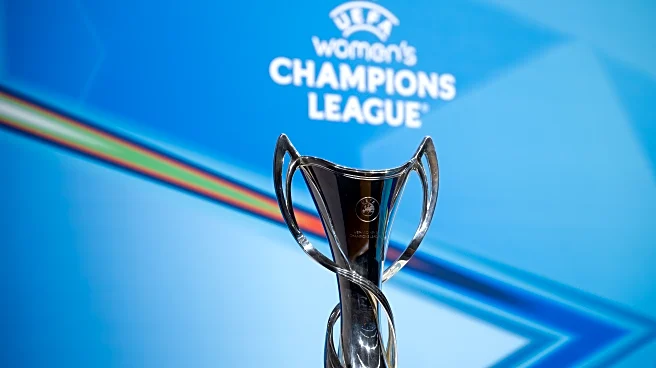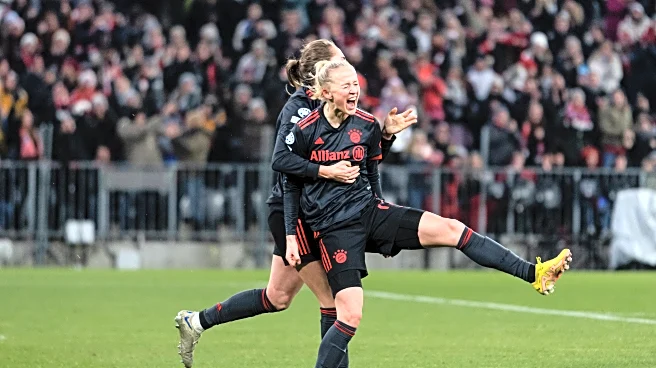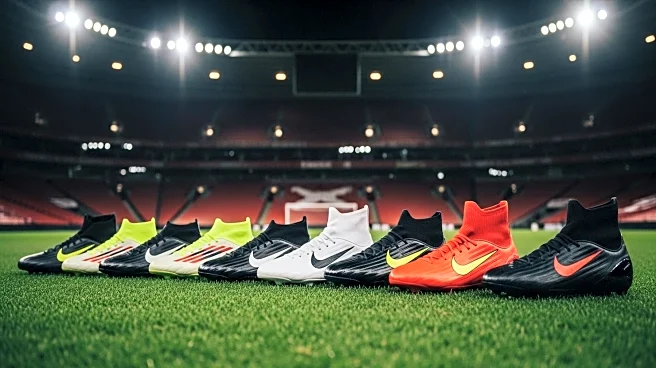What's Happening?
The UEFA Women's Champions League is set to undergo a significant transformation for the 2025-26 season, moving away from its traditional group stage format to an 18-team league phase inspired by the men's 'Swiss model.' This new format will see teams play against six different opponents, with half of the matches at home and half away. The league phase draw is scheduled to take place in Nyon, Switzerland, and will be broadcast live on CBS Sports Golazo Network. The draw will involve 18 clubs divided into three pots based on club coefficient rankings, with reigning champions Arsenal as the top seed in pot 1. The draw will be conducted manually and with automated software, ensuring clubs from the same association do not face each other. The top four teams from the league phase will advance directly to the quarterfinals, while teams ranked fifth through 12th will compete in a knockout playoff for the remaining spots.
Why It's Important?
This change in format is significant as it aims to increase the competitiveness and drama of the UEFA Women's Champions League by providing more matches and a single league table ranking system. The new structure allows for a broader range of matchups and could potentially lead to more unpredictable outcomes, enhancing viewer engagement and interest in women's football. The introduction of the league phase is expected to elevate the profile of the tournament, offering clubs more opportunities to showcase their talents on a larger stage. This could have a positive impact on the growth and visibility of women's soccer globally, encouraging investment and development in the sport.
What's Next?
Following the draw, the league phase matches are set to begin in October, with the first matchday scheduled for October 7-8. The knockout phase playoffs will follow, with the draw for these matches taking place in December. The tournament will culminate in the Champions League Final in May 2026 at Ullevaal Stadion in Oslo, Norway. Clubs and fans alike will be closely monitoring the outcomes of the draw and subsequent matches, as teams strategize to secure their positions in the quarterfinals and beyond.
Beyond the Headlines
The shift to a league phase format may also influence the strategic approaches of clubs, as they adapt to the new system of ranking and match scheduling. This could lead to changes in team management and player utilization, as clubs aim to optimize their performance across a more varied set of opponents. Additionally, the increased exposure and competitive nature of the league phase could drive further interest from sponsors and media, potentially leading to greater financial support for women's soccer.












